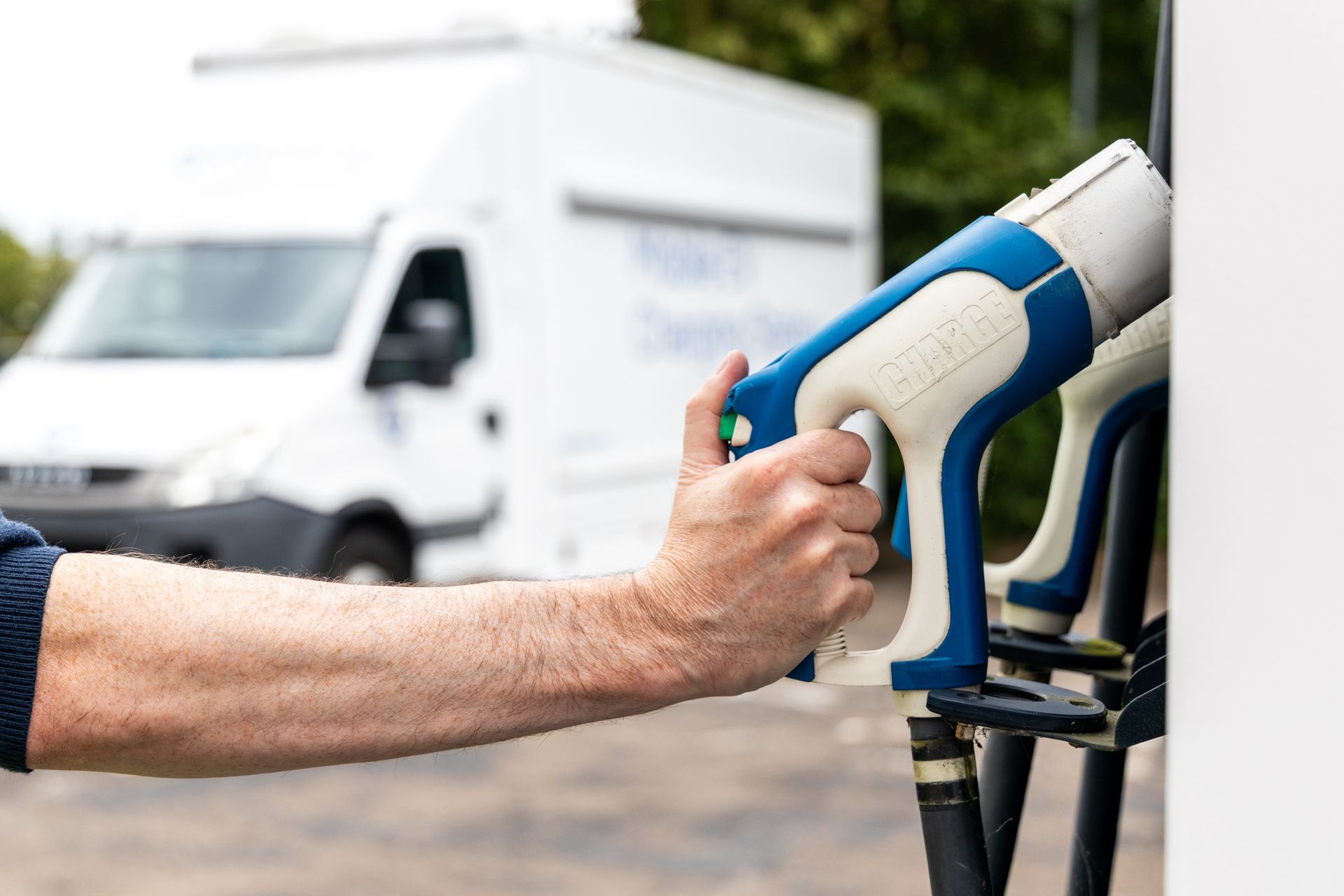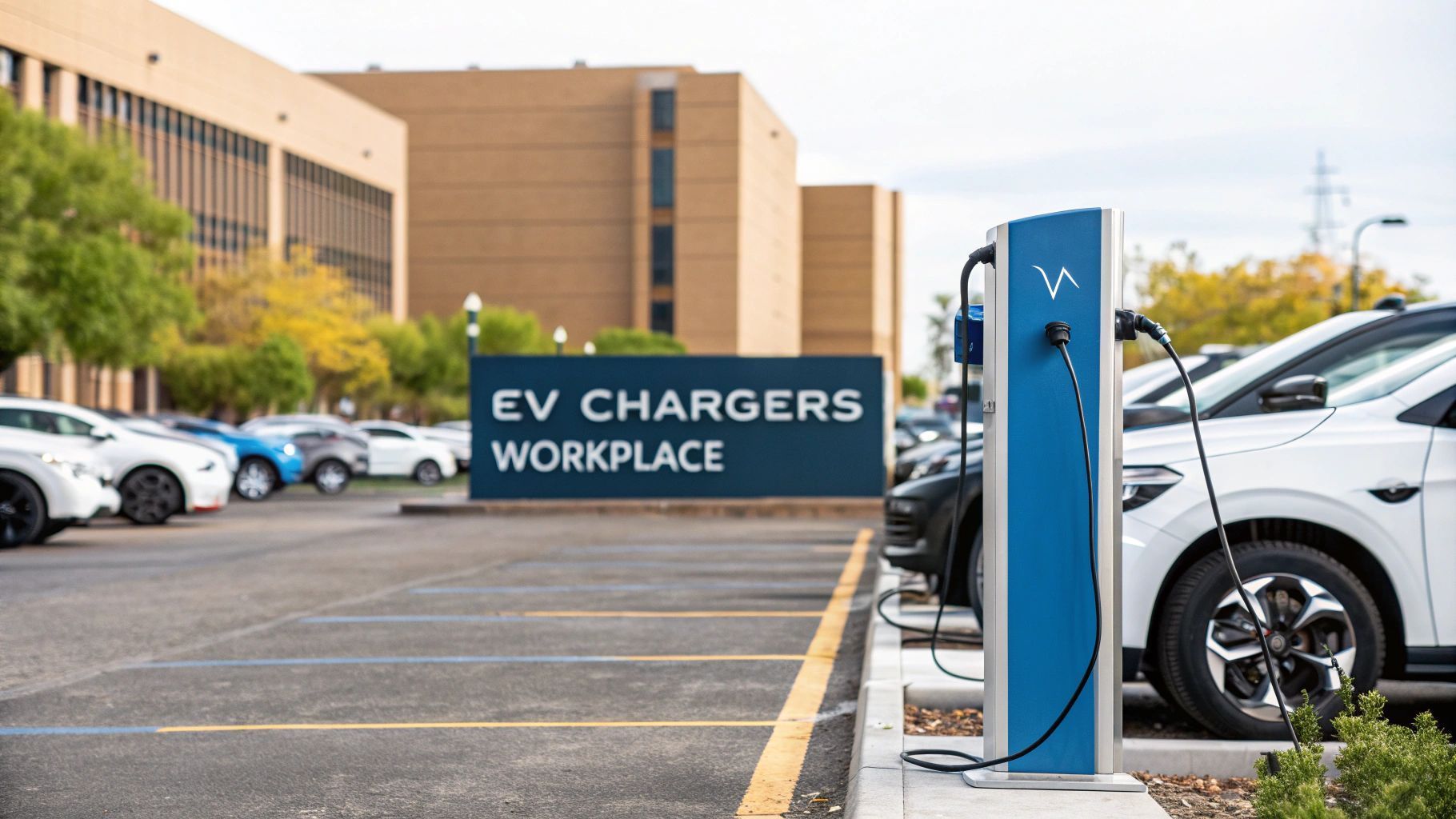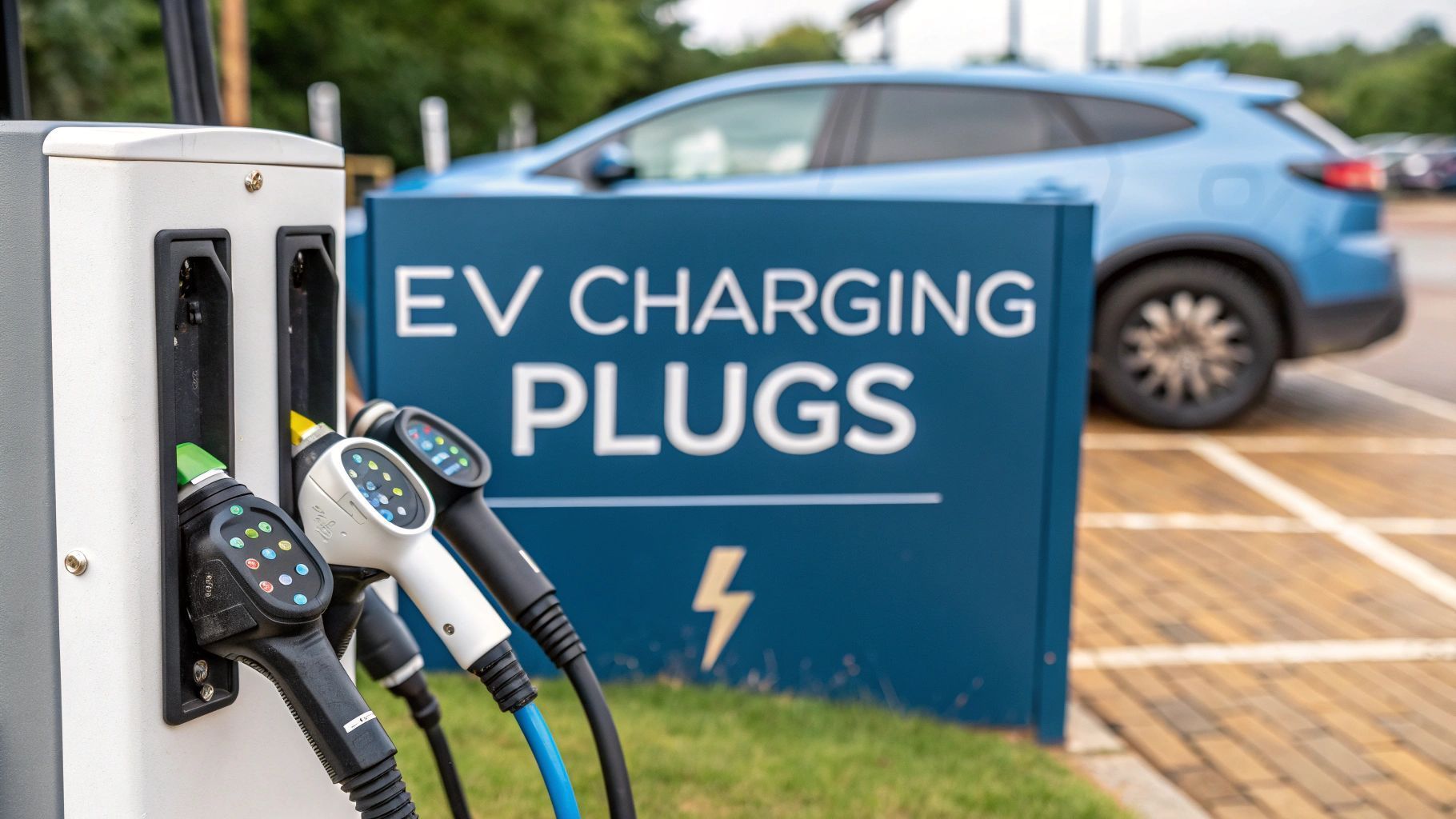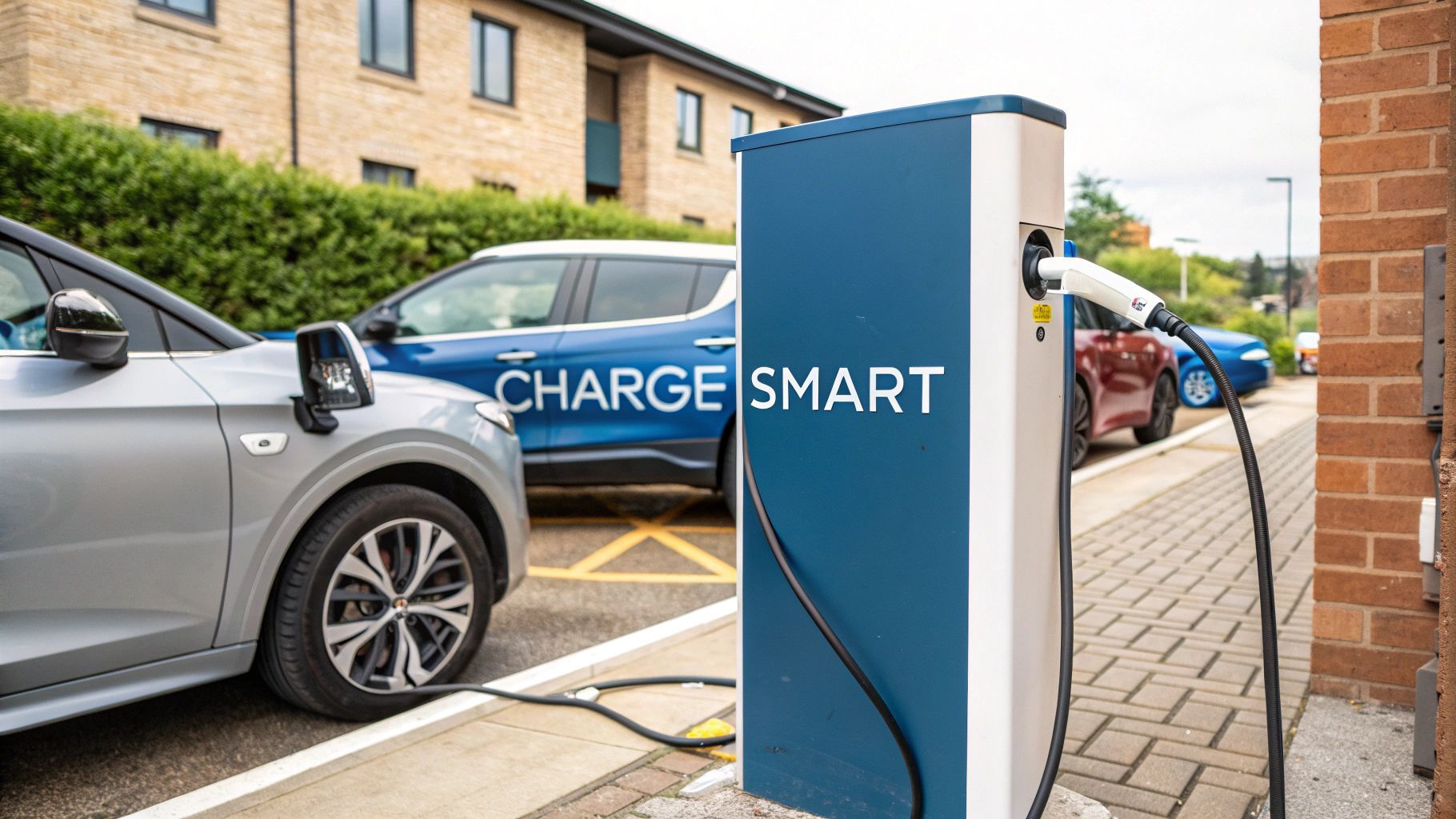Tesla Supercharger Cost UK Uncovered
Figuring out Tesla Supercharger costs in the UK is simpler than you might think. On average, you can expect to pay somewhere between 47p and 67p per kilowatt-hour (kWh) .
The final price on your screen, however, will shift based on a few key things: whether you are a Tesla owner, the specific station you are using, and if you are plugging in during peak or off-peak hours.
Understanding UK Supercharger Costs
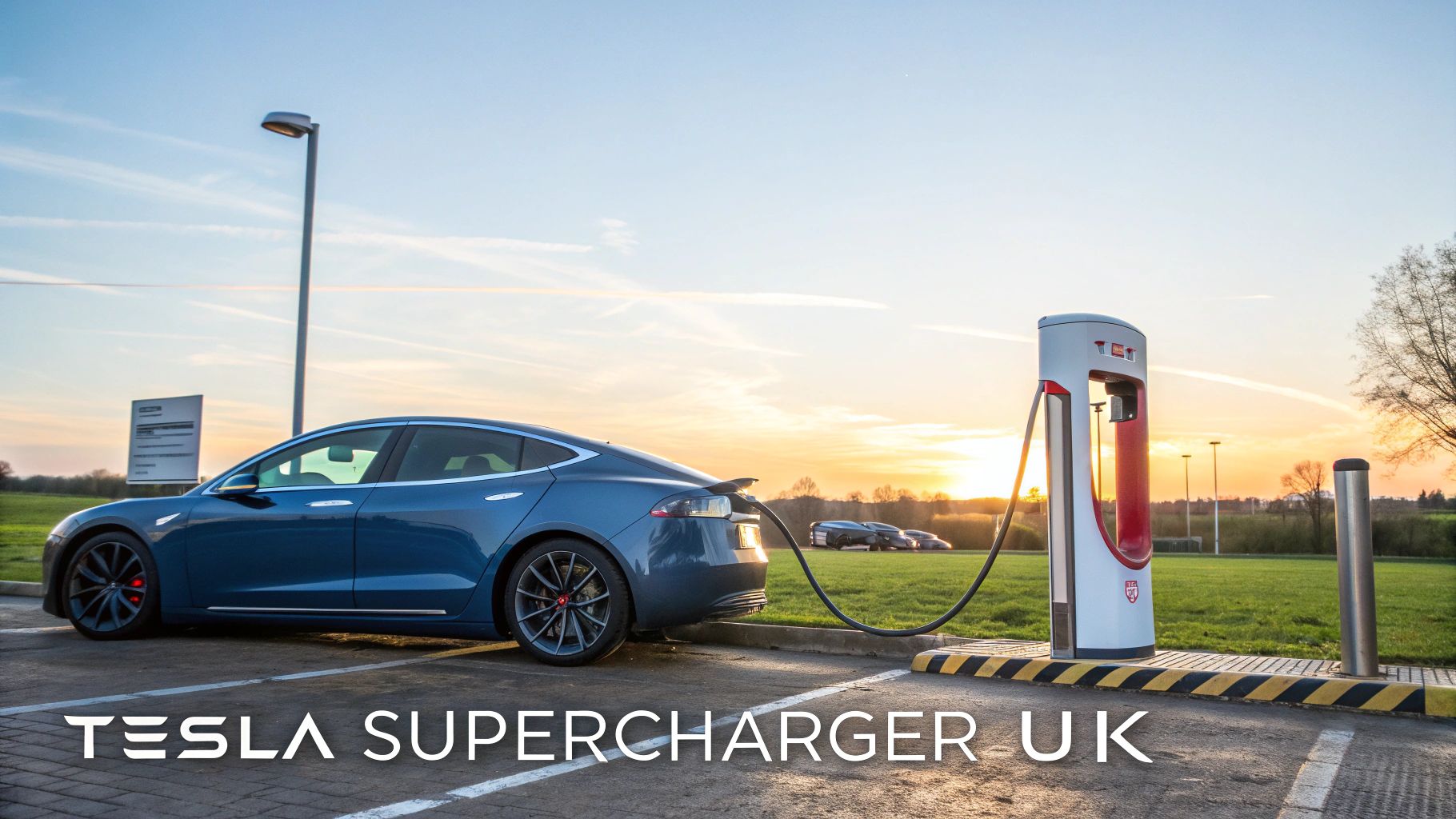
While the world of EV charging can seem a bit convoluted at first, Tesla's system is pretty straightforward. You are not paying a flat fee for a "fill-up". Instead, the cost is based on the amount of energy you actually use, measured in kilowatt-hours (kWh).
Think of a kWh as the electric equivalent of a litre of petrol. It is the standard unit for the energy your car's battery can hold.
So, when a Supercharger displays a rate of 55p/kWh , it simply means you will pay 55 pence for every unit of energy that flows into your battery. This pay-for-what-you-use model is fair and transparent, ensuring you only cover the electricity your car takes on.
But the price is not set in stone. Tesla uses a dynamic pricing model, meaning the cost can fluctuate depending on demand. Charging at a busy motorway service station at 5 PM on a Friday will almost certainly cost more than topping up at a quiet supermarket car park late on a Tuesday night. This helps balance the load on the grid and nudges drivers to charge when electricity is cheaper for everyone.
Key Factors Influencing Your Bill
A few different elements come together to determine your final bill. Get your head around these and you can be much smarter about how and when you charge.
- Vehicle Ownership: Tesla owners get better rates. It is one of the built-in perks of being part of the Tesla ecosystem.
- Time of Day: Just like your home electricity tariff, there are peak and off-peak times. Peak hours, usually from 4 PM to 8 PM , are the priciest.
- Location: Prime spots cost more. Superchargers in central London or along the M1 will often have higher per-kWh rates than those in less travelled areas.
- Membership: If you do not drive a Tesla you can still get the good rates. A monthly membership brings the cost per kWh down to the same level Tesla owners enjoy.
A quick look at how these factors play out can make things clearer.
UK Supercharger Costs At a Glance
This table breaks down the typical costs for both Tesla and non-Tesla drivers, showing how membership can level the playing field.
| Driver Type | Average Cost per kWh | Membership Option | Estimated Cost per Mile |
|---|---|---|---|
| Tesla Owner | 47p - 58p | N/A | 12p - 15p |
| Non-Tesla Driver | 60p - 67p | Pay-as-you-go | 15p - 17p |
| Non-Tesla w/ Membership | 47p - 58p | £10.99/month | 12p - 15p |
As you can see, that £10.99 monthly membership quickly pays for itself if you plan on using the Supercharger network regularly in a non-Tesla EV.
To truly get the measure of Tesla's network, it helps to see it within the broader context of the UK's evolving e-mobility landscape. This bigger picture explains why robust, rapid charging infrastructure is becoming so critical.
Of course, Tesla is not the only game in town. It is always worth comparing what is on offer from other networks. For a full breakdown of the alternatives, our guide to the UK's public EV charging point networks in 2025 is the perfect place to start.
How Tesla Owners Save on Charging
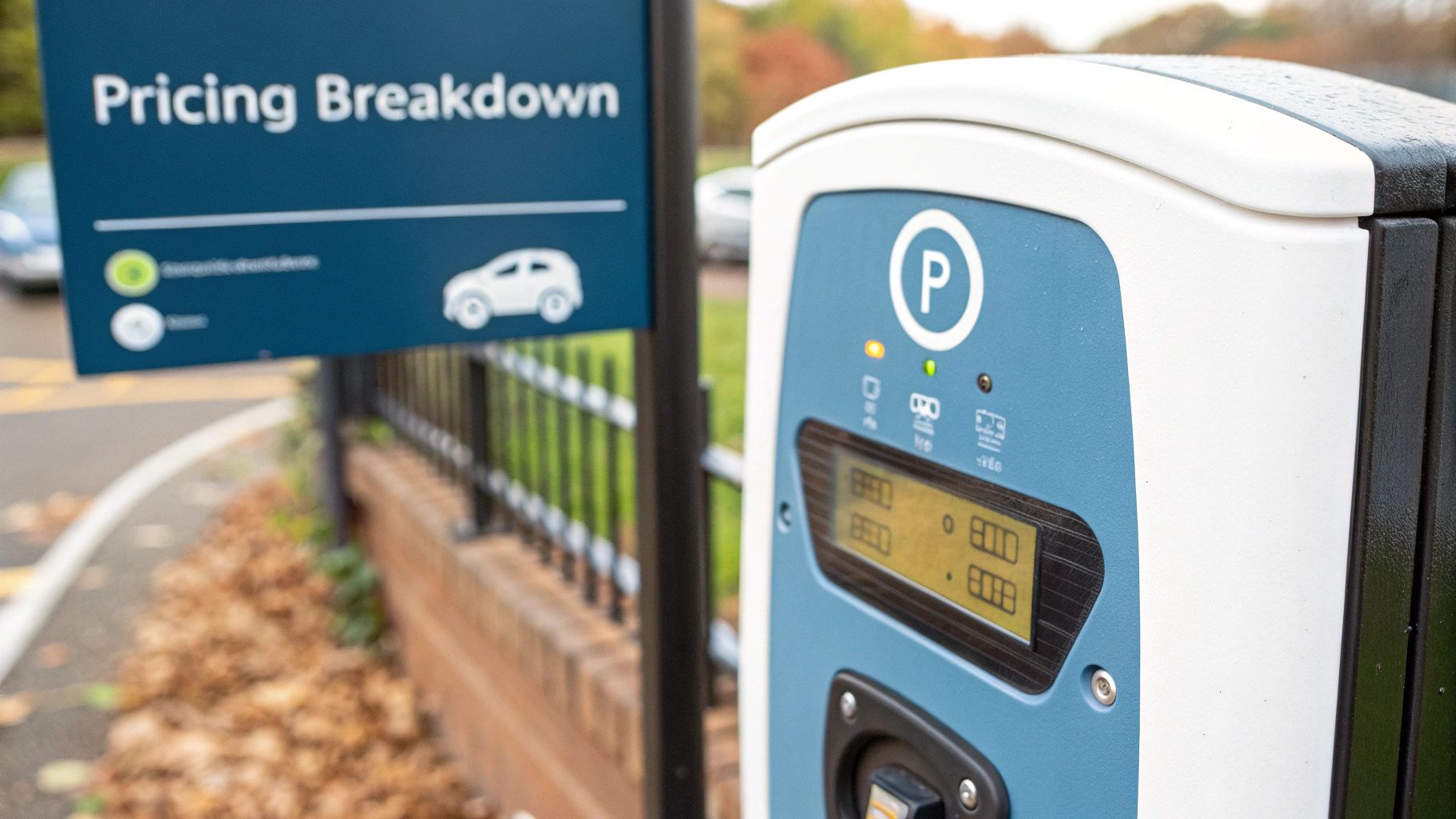
Owning a Tesla in the UK comes with some serious perks, but one of the most practical has to be the cheaper rates at Supercharger stations. This is not just a token discount; it is a core benefit of being part of the Tesla ecosystem that genuinely lowers your running costs. Tesla looks after its own drivers by giving them lower per-kWh rates right out of the box.
This price difference is a massive part of the ownership experience. While other EV drivers can use the network, they pay a premium for the privilege—unless they stump up for a monthly membership. For Tesla drivers, the lower Tesla Supercharger cost UK is automatic. No extra fees, no subscriptions.
It all boils down to a straightforward two-tier system. The base rate is for Tesla owners and a higher rate applies to everyone else on a pay-as-you-go basis. It is a simple but powerful way to reward brand loyalty.
Dynamic Pricing: Your Key to Cheaper Miles
Beyond the standard owner discount, the real secret to squeezing every last drop of value from the Supercharger network is getting to grips with Tesla's dynamic pricing. This clever system adjusts the cost of electricity based on real-time demand, both at the local charger and on the national grid. With a little bit of planning, you can slash your charging bill.
The model works on a simple supply-and-demand basis. Costs are at their highest during peak hours , which is usually between 4 PM and 8 PM on weekdays when everyone is heading home from work and plugging in. On the flip side, prices take a nosedive during off-peak hours , typically overnight and throughout most of the weekend.
The core takeaway here is simple: if you can sidestep charging during those peak evening hours, you will almost always pay less. Planning your long trips or weekly top-ups to fall within these cheaper windows is the single most effective trick for keeping your charging expenses down.
Location, Location, Location
Just as timing is everything, so is location. The price you pay per kWh is not the same across the UK. A busy motorway service station on the M25 is almost guaranteed to charge more than a quiet, out-of-the-way site in a suburban retail park. The Tesla app is your best friend here as it gives you live pricing for every single station on the map.
For instance, a Tesla owner in the UK typically pays around 40p/kWh , which works out to about 8.1 pence per mile for an average EV. This is often around 20% less than what a non-Tesla driver would pay at the same charger, highlighting the very real financial upside of ownership. You can discover more insights about the latest EV charging prices and see how these rates stack up.
By thinking about both time and location, you can take real control over your charging costs. A small detour to a cheaper station or waiting until a bit later in the evening can lead to some noticeable savings, making the already competitive Tesla Supercharger cost UK even more appealing.
Charging a Non-Tesla EV at a Supercharger
For years, the Tesla Supercharger network was a walled garden, exclusively for Tesla drivers. Now, those walls are coming down, opening up one of the UK’s most reliable and widespread charging infrastructures to everyone else. If you drive a Ford Mustang Mach-E, a Polestar 2, or any other compatible EV, you can now plug in and top up with ease.
There is a catch, though: you will pay a different rate.
Typically, the Tesla Supercharger cost UK for non-Tesla drivers is higher on a pay-as-you-go basis. This premium is not just a random surcharge; it reflects Tesla's massive investment in building and maintaining the network, with lower pricing acting as a key perk for its own drivers. Not sure if your car can plug in? Our guide on EV charging compatibility can help you confirm your connection type.
The pricing for non-Tesla owners is not set in stone. It fluctuates depending on the location and time, with rates having ranged anywhere from 65p to 72p per kWh in the past. At certain points, the cost per mile has worked out to around 11.1 pence for an average-sized electric car. The key takeaway? Always check the live prices in the Tesla app before you start a charge.
How to Get Tesla Owner Pricing
Fortunately, you do not have to buy a Tesla to get the best rates. The company now offers a Tesla Charging Membership aimed squarely at drivers of other EV brands. Think of it as a subscription that unlocks a better deal.
For a monthly fee, currently £10.99 in the UK , you get access to the same lower per-kWh prices that Tesla owners enjoy. This simple membership can make the Supercharger network a far more cost-effective option for long journeys or regular top-ups, effectively wiping out that pay-as-you-go premium.
This infographic puts the costs into perspective, comparing Supercharger rates with what you might pay at home.
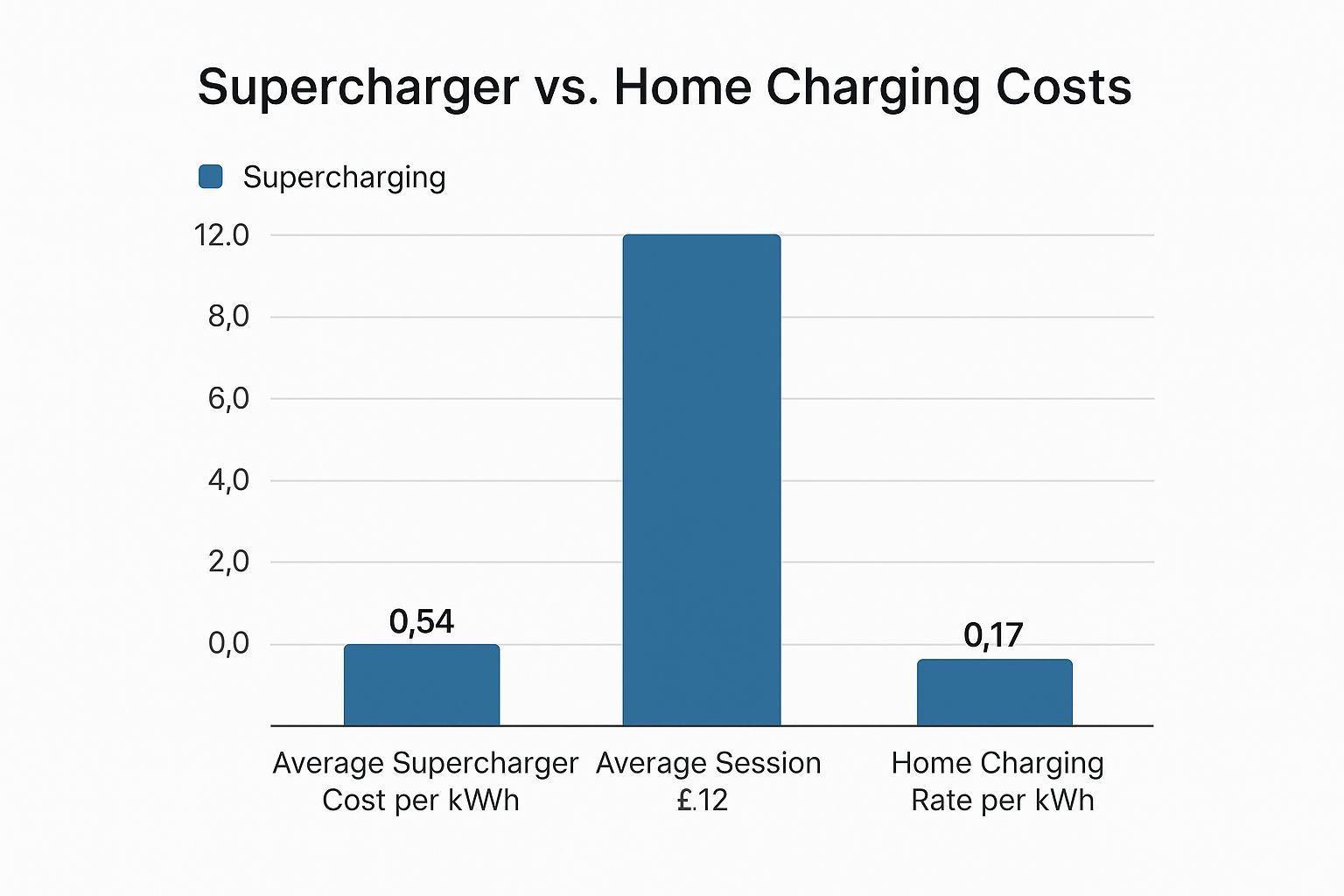
As you can see, public rapid charging will always be more expensive than plugging in overnight at home, but with the right approach, you can narrow that gap significantly.
Is the Membership Worth It?
Whether the membership makes financial sense for you comes down to a bit of simple maths. You just need to figure out your break-even point.
Let's say the difference between the member and non-member rate is about 15p per kWh. To cover the £10.99 monthly fee, you would need to charge roughly 74 kWh . For an EV with a 77 kWh battery, that is just a single full charge.
If you know you will be using the Supercharger network more than once or twice a month for a decent top-up, the membership will almost certainly save you money. It transforms the network from a convenient-but-pricey backup into a genuinely competitive and economical choice for your charging needs.
How to Avoid Unexpected Idle Fees
Nothing sours a smooth charging stop quite like an unexpected idle fee tacked onto your bill. These charges are Tesla's way of encouraging good charging etiquette, making sure a fully charged car does not hog a spot that another driver desperately needs.
Think of it as a polite but firm nudge to move along.
With more and more EVs hitting UK roads, a blocked Supercharger can cause real headaches and long waits for other drivers. The idle fee system is designed to keep the network flowing, motivating people to free up the bay as soon as they are done. It is all about maximising availability for everyone.
How Idle Fees Are Calculated
The charges do not just start randomly. They only kick in once your charging session is complete and the station is at least 50% full .
If the station is completely packed when your charge finishes, the fees double. It is a pretty strong incentive to get you moving.
In the UK, the standard idle fee is £0.50 per minute . This jumps to a painful £1.00 per minute if the station is at 100% capacity. It is easy to see how quickly this can add up, turning a cheap top-up into an expensive mistake. Just ten minutes of dithering could add £5 or even £10 to your Tesla Supercharger cost UK .
Here is the critical detail: there is no grace period. The second your car hits its charge limit and the station is busy, the clock starts ticking. The only way to reliably avoid these fees is to be aware and prepared.
Simple Steps to Dodge the Charges
Thankfully, avoiding idle fees is dead simple with a little bit of planning. Tesla gives you all the tools you need right inside the app, so there is really no excuse for getting caught out.
Here are the best ways to stay ahead of the game:
- Set In-App Notifications: This is your first and most important line of defence. The Tesla app will ping you when your charge is nearly done and again when it is finished. Just make sure you have allowed notifications from the app on your phone.
- Monitor Your Session Remotely: Keep an eye on the charging progress in the app. This lets you time your return perfectly, so you can walk up to your car just as the session is wrapping up.
- Adjust Your Charge Limit: If you are just grabbing a coffee or a quick bite to eat, you probably do not need a 100% charge. Setting your limit to 80% or 90% not only gets the job done faster but is also much better for your battery's long-term health.
- Be Ready to Move: The simplest rule of all. If you know your charge is getting close to finishing, stay near your car. Being ready to unplug and move on immediately is the most courteous—and cost-effective—thing you can do.
The Mobile Charging Business Opportunity
Beyond the fixed grid of Tesla Superchargers, a far more flexible solution is gaining traction across the UK: mobile EV charging.
This is not just a breakdown service for stranded drivers; it is a fully-fledged business opportunity tapping into the gaps left by traditional infrastructure. As the number of electric vehicles on UK roads continues to surge, the demand for on-demand power is creating a profitable new market niche.
The real magic of mobile charging is its sheer adaptability. Operators are not tied to a single, static location. They can provide a crucial lifeline to an EV driver who has misjudged their range or offer on-site top-ups for business fleets in depots without dedicated charging bays. This flexibility means you can go where the demand is, from rural tourist spots to busy event car parks.
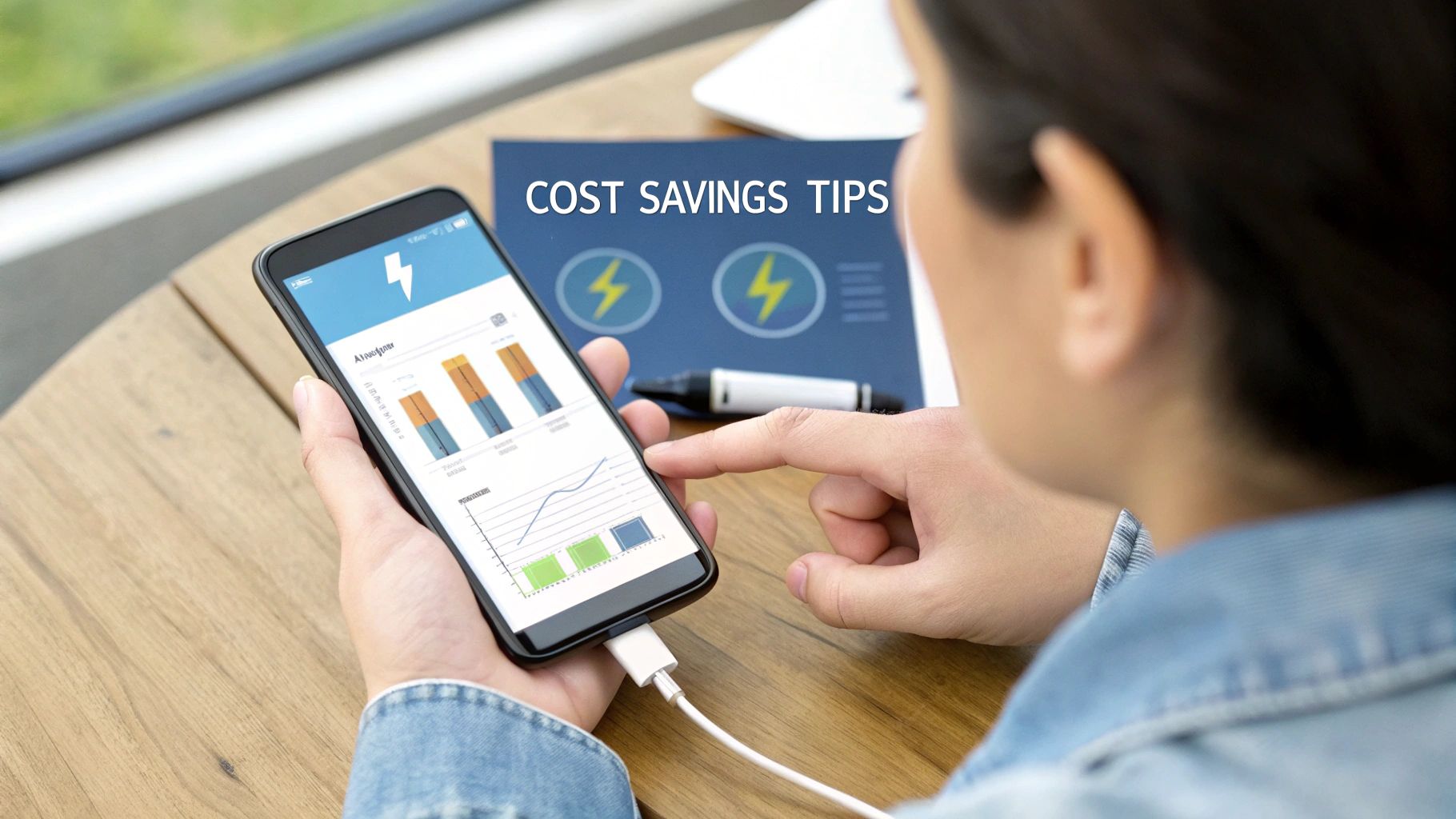
This service-on-wheels model transforms EV charging from a static utility into a dynamic, responsive business capable of generating significant revenue.
Analysing the Financial Potential
The real appeal for an operator lies in the impressive earning potential. A single emergency call-out can be a high-margin event, with operators typically charging between £70 and £120 for a roadside rescue.
That fee covers the convenience and the immediate solution provided to a driver in a tight spot, making it a valuable service that customers are more than willing to pay a premium for.
Beyond individual call-outs, the opportunity extends to more stable, contract-based revenue. Imagine securing a service agreement with a local council, a car rental agency, or a delivery company. These contracts can provide a steady income by ensuring their electric fleets remain operational, eliminating downtime and the need for expensive fixed charger installations at multiple sites.
Weighing Costs Against Returns
Of course, starting a mobile charging business requires an initial investment. The primary expense is the mobile charging unit itself, which can be a significant outlay.
However, when you weigh this cost against the potential for high-margin returns, the financial case becomes very compelling. Unlike a fixed charger which only earns money when a car is plugged in, a mobile unit generates revenue from its service fee, not just the electricity it dispenses.
The business model is built on service and convenience, not just selling kilowatts. This fundamental difference is what allows operators to command higher prices and achieve profitability much faster than if they were simply competing with the standard Tesla Supercharger cost UK .
The growing EV market means the customer base for this service is expanding daily. Aspiring entrepreneurs can find valuable information on launching such a venture. For instance, entrepreneurs venturing into mobile charging can benefit from essential startup founder best practices for validating, funding and scaling their companies successfully.
A Profitable Future
The mobile charging sector represents a ground-floor opportunity in the evolving EV ecosystem. It addresses key pain points for drivers—range anxiety and charging blackspots—while offering a profitable and scalable business model for operators. A deep dive into the economics of mobile EV charging shows just how viable this model can be.
As EV adoption becomes universal, the need for flexible, on-demand charging solutions will only intensify. For those looking to enter the market, mobile charging offers a chance to build a successful business that directly supports the UK's transition to electric transport. It is a venture that combines practicality with profitability, powering the future one call-out at a time.
Your Questions Answered
When you are getting to grips with Tesla Supercharger costs in the UK , a few common questions always pop up. Let's run through them and clear up any confusion so you can charge with confidence.
How Can I Find the Exact Price for a Supercharger Station?
The best tool you have is the one in your pocket: the Tesla app. It is your single source of truth.
Before you even think about plugging in, just open the map in the app, tap on any Supercharger location and it will show you the live, up-to-the-minute cost per kWh. Because prices shift depending on the time of day and the specific site, making a habit of checking the app just before you arrive is the smartest way to go. No nasty surprises, just the exact rate you will be paying.
Is the Tesla Charging Membership Worth It for a Non-Tesla Owner?
This really boils down to how often you plan to use the network. The subscription comes in at around £10.99 a month in the UK. If you are a regular long-distance driver, the savings from the reduced per-kWh rate—the same price Tesla owners pay—can easily cancel out that fee and then some.
As a rough guide, if you see yourself needing a decent top-up on the Supercharger network more than twice a month, the membership will almost certainly save you money. It turns the Supercharger network from a convenient but pricey option into a much more economical choice for frequent travellers.
Are There Cheaper Alternatives to Tesla Superchargers in the UK?
Yes, absolutely. The UK has a growing number of public charging networks and many can be quite competitive, especially when you compare them to the non-member Supercharger rates. Networks like Gridserve , Pod Point , and Osprey all have their own pricing models and membership deals worth looking into.
That said, the cheapest charge you will ever get is almost always at home, plugging in overnight on an off-peak electricity tariff. Nothing else really comes close.
Where the Supercharger network really shines is in its sheer speed, reliability and the number of chargers at each site. While you might find a lower price elsewhere, the simple, dependable "plug and charge" experience is what keeps many drivers coming back. For a hassle-free top-up, that small premium is often worth every penny.
Can I Use Free Supercharging Credits in the UK?
You certainly can. If you have racked up free Supercharging miles through a referral programme or as part of your vehicle purchase, they are good to go across the entire UK network. There are no sneaky regional restrictions to worry about.
Your Tesla account handles it all automatically. It will apply your credits to each charging session until your balance is used up, so there is nothing you need to do manually. You can always check how many free miles you have left in your Tesla account or on the app, making it easy to keep track.
At ZAPME , we believe charging should be available everywhere, not just at fixed points. Our mobile charging solutions bring the power directly to you, whether for roadside assistance or fleet management. Discover how our on-demand energy services are making EV ownership simpler at https://www.zapme.biz.

